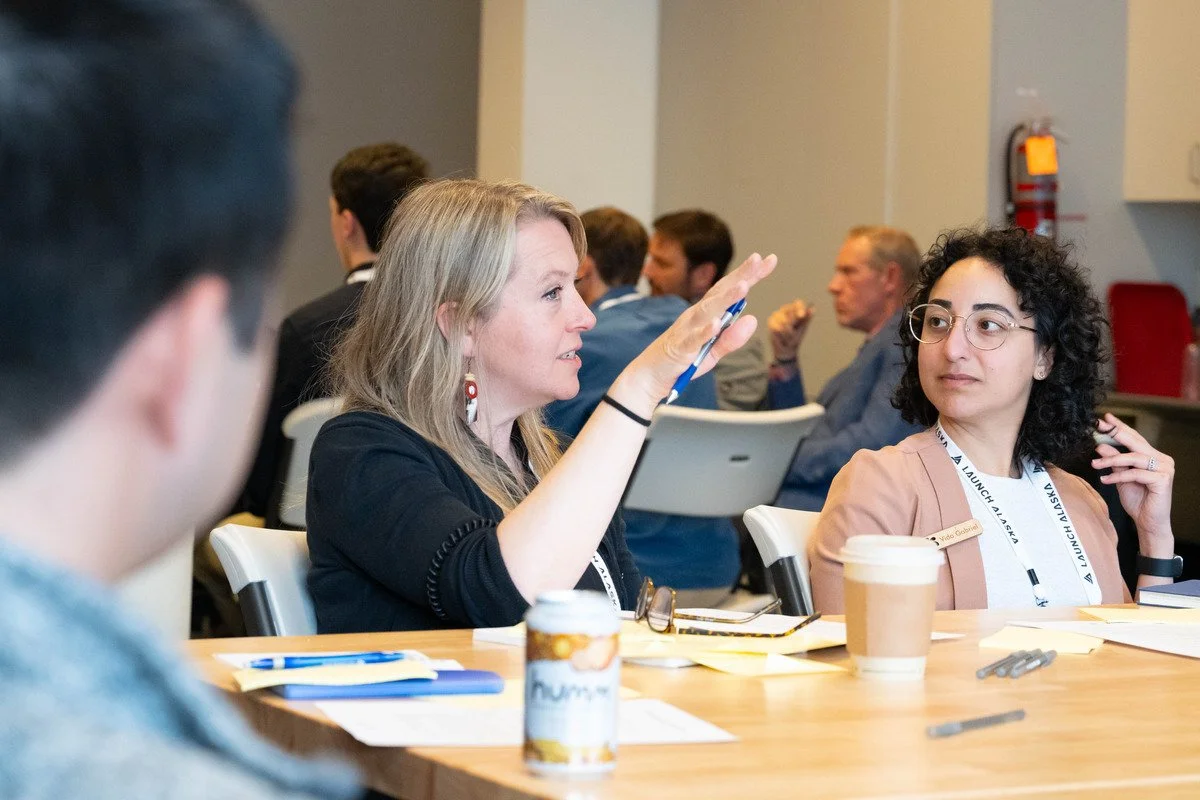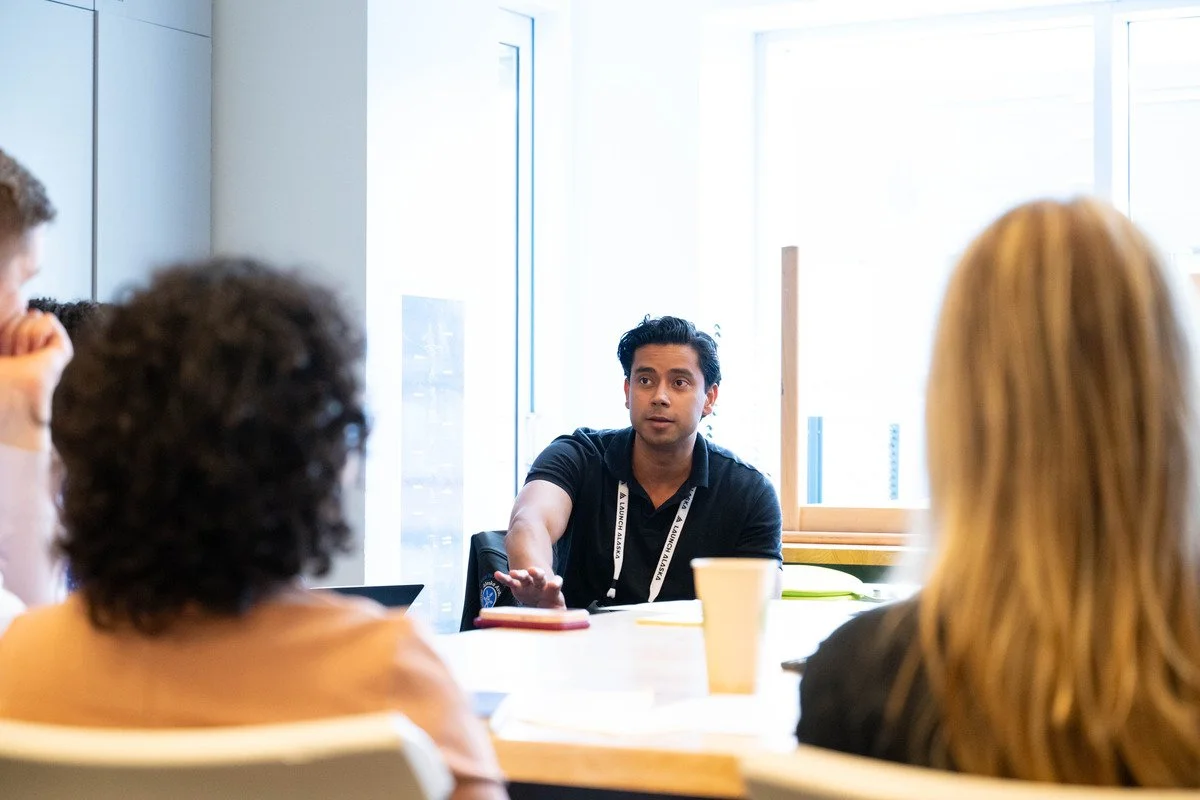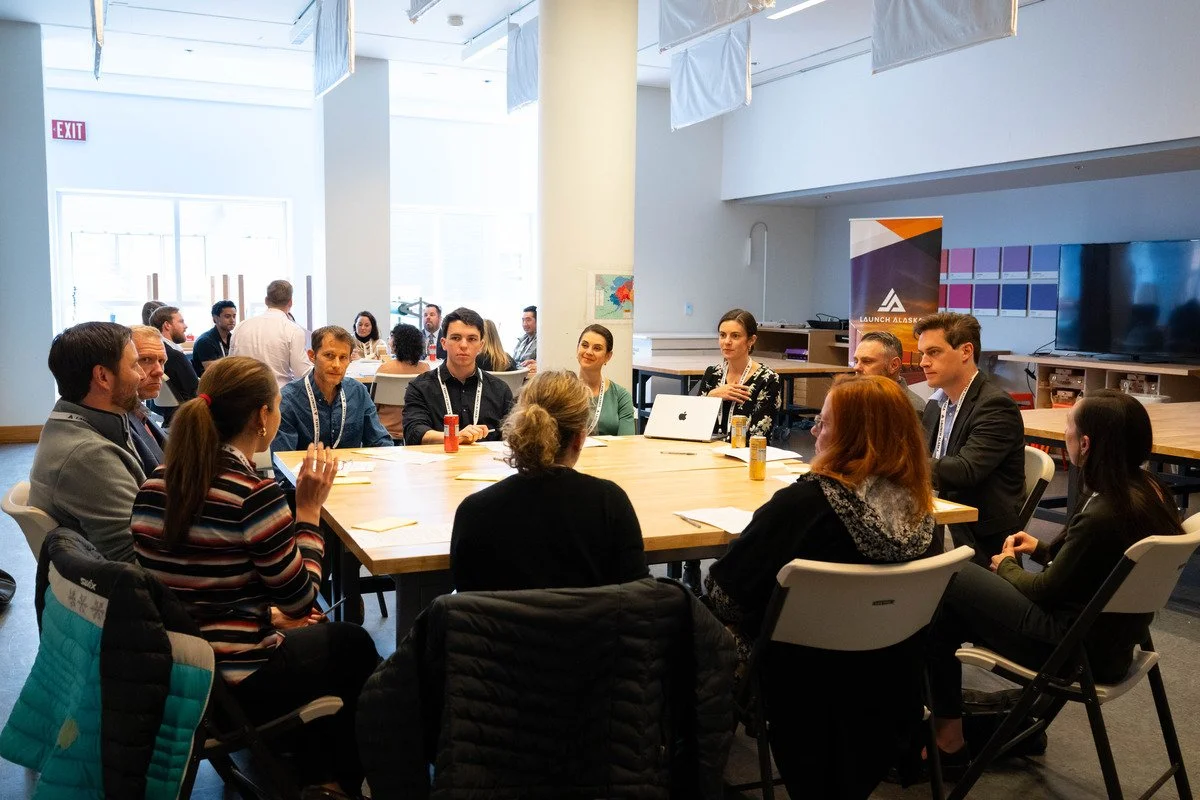2025 Climate Capital Roundtable: Key Takeaways
Above: Participants discuss climate tech deployment in Alaska during the 2025 Climate Capital Roundtable. Photo by Tim Leach, Launch Alaska.
Hosted by Launch Alaska with major support from the Alaska Tech Hub, the inaugural Climate Capital Roundtable convened multiple partners in June 2025 in Anchorage, AK to identify the barriers and breakthroughs necessary to accelerate cutting-edge energy, transportation and industrial technologies in Alaska. In the current uncertain government funding environment, the roundtable focused on aligning private capital with innovation-ready infrastructure, building the right financial and institutional support systems, and unlocking opportunities unique to Alaska’s energy landscape, with the goal of providing lower costs to consumers and spurring economic growth.
Discussion participants spanned the private, public, and nonprofit sectors, representing all stages of the project development cycle. Attendees included 11 Launch Alaska Portfolio companies, project developers, capital providers (including lenders, venture capital firms, and government agencies), utility representatives, and visiting Borealis fellows). Collectively, these organizations operate across Alaska and are managing or investing in hundreds of millions of dollars in emerging energy technologies nationwide
A key challenge emerged throughout the roundtable: there is a persistent mismatch between the structure and timing of available capital and the realities of initial commercial deployments or remote infrastructure projects in Alaska. Several solutions also emerged to improve the innovation culture and trust necessary to deploy in the state.
Above: Participants discuss climate tech deployment in Alaska during the 2025 Climate Capital Roundtable. Photo by Tim Leach, Launch Alaska.
When public sources of capital are available, they often come with strict constraints - geographic, temporal, or regulatory - that make them incompatible with the timelines and risk profile of early demonstration projects (small-scale projects beyond the pilot project stage that involve a commercial agreement used to test and showcase the feasibility, effectiveness, or value of a new concept, product, or method). Meanwhile, public sources of funding typically do not provide for the long-term operations and maintenance of technologies after they are placed in service, which diminishes the business case for Alaska offtakers or communities.
Private sources of capital tend to be either high-risk and high-return venture capital or low-risk and low-return project finance. Very few private capital providers focus on demonstration projects, which can have attributes of both venture and project finance. On the other hand, private capital providers enjoy greater flexibility to structure deals, deploy new business models that price in operations and maintenance costs, and adjust investment timelines to align with the needs of technology providers and their partners.
Roundtable participants noted that Alaska is a promising location to demonstrate and validate climate technologies in partnership with communities, due to its diverse environmental conditions, high energy costs, and untapped renewable resources. However, the state energy ecosystem lacks some essential ingredients: a culture of risk tolerance, comfort with using debt or equity investing to drive projects and innovation, technical and financial capacity among customer communities, and a clear, trusted pathway from prototype to procurement. Climate technology startup founders working in Alaska are navigating a “messy middle,” where use cases and enthusiasm abound, but where customers often lack the tools, bandwidth, or confidence to partner with technology providers.
Key Findings and Discussion Themes
1. Capital Availability is not Capital Accessibility. Funding exists, but it is often tied to rigid frameworks that are ill-suited to Alaska’s conditions and the needs of climate technology demonstration projects.
Demonstration Project and Remote Project Mismatch: Capital is often designed for repeatable, low-risk deployments, not novel or remote infrastructure.
Deferred Maintenance Crisis: Projects are often deployed without long-term operations and maintenance budgets in place.
Public and Venture Capital Constraints: Both sources demand returns or value demonstrations that are difficult to show in early-stage projects or rural contexts.
2. Alaska’s “Messy Middle.” The Space Between Demonstration and Full Commercial Deployment. Startups struggle to scale without sufficient customer-side support and institutional backing.
Cautious Adoption Environment: Alaska’s utilities and communities often take a risk-averse approach to new technologies, with limited local champions willing or positioned to lead early adoption.
Lack of Independent Technical Guidance: Startups are often unable to provide impartial modeling or design support to prospective customers. Third-party organizations help fill this gap.
Bandwidth and Capacity Limits: Alaska communities often lack the expertise or time to pursue complex funding, engineering, or procurement processes required for climate technology.
3. Reframing Alaska’s Identity. There’s an opportunity to tell a new story about Alaska’s role in global climate innovation.
A New Vision of an Energy State: Positioning Alaska as a premier proving ground for advanced energy technologies in extreme environments.
Early Deployment Opportunities: Defense installations and mining sites provide structured, mission-critical settings for testing and validating emerging solutions in real-world conditions.
Railbelt as a Launch Platform: Proven technologies can scale from Alaska’s Railbelt urban utilities into more remote communities, reducing both technical and financial risk.
4. Reducing Risk and Building Trust. To accelerate technology adoption, trust-building measures and de-risking strategies are essential.
Performance Guarantees and Risk Buydowns: Mechanisms like “if it fails, we’ll pay” agreements can lower barriers for early adopters and build credibility.
Pipeline Development: Establishing repeatable processes for tech adoption - from pilot to procurement - will help normalize startup engagement.
Utility and State Partnerships: Stronger collaboration between utilities, third-party intermediaries, and the State of Alaska can streamline innovation pathways and build institutional confidence.
5. Cultivating an Innovation Culture in Climate Tech. Stronger collaboration between utilities, third-party intermediaries, and the State of Alaska can streamline innovation pathways and build institutional confidence.
Celebrating Local Champions: Acknowledging and elevating the bold adopters already active in Alaska can help encourage others.
Community Education on Capital Tools: Building local understanding of financing options and risk structures is key to unlocking demand.
Preparing for Post-Federal Funding: As federal investment contracts, Alaska must proactively build alternative capital pathways and support systems.
Our Big Takeaway
Alaska has the potential to become a globally recognized demonstration ground for climate technologies, but only if capital, capacity, and culture evolve together. That means aligning financial tools with the realities of demonstration projects, strengthening support systems for customers and communities, and building a public narrative that embraces innovation in our energy, transportation and industrial sectors. The Launch Alaska 2025 Climate Capital Roundtable was one important step in that effort. With the right mechanisms in place, Alaska can lead the way in demonstrating what’s possible - building a more resilient, opportunity-rich future with global relevance.
Above: Participants discuss climate tech deployment in Alaska during the 2025 Climate Capital Roundtable. Photo by Tim Leach, Launch Alaska.



